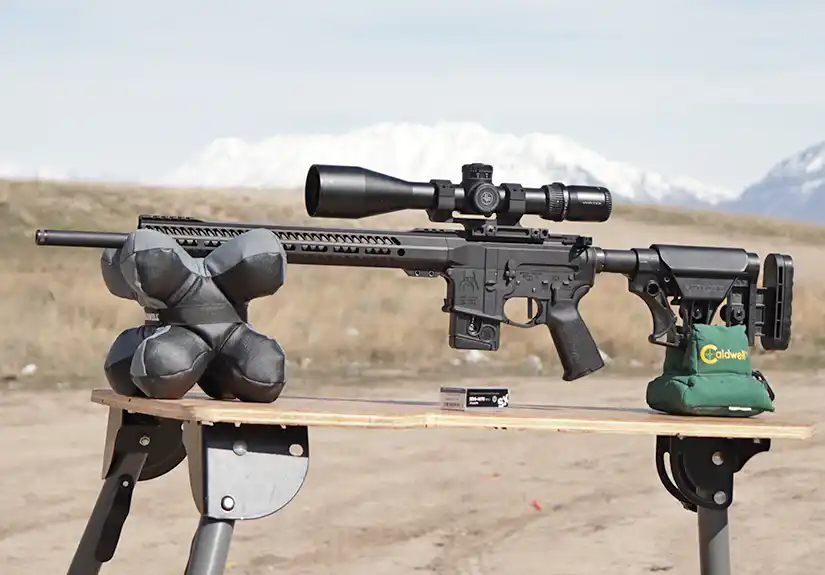I’ve spent the past several weeks wringing out the BoreBuddy AR22 Apogee Match Upper. This is a complete .22 LR upper, ready to be paired with a standard AR15 lower. While it’s not quite as simple as dropping it on your lower and shooting sub-MOA groups, it’s not far off either. All the big bugs of getting an AR22 to run reliably have been worked out. What’s left is a bit of tuning, but even that is pretty straightforward. The issues I had were all of my own making. And once I got past them, this rifle has been accurate, fun, and quiet.
If you’re interested in a highly accurate AR22 that also suppresses well, you’ve come to the right place. Join me for a quick walk-through of the upper and related products, tuning, and the final results.
BoreBuddy AR22 Apogee Match Upper Specs
Obviously, the star here is the barrel. It’s a 21″ 416R stainless barrel with a nitride finish, threaded 1/2 x 28, and topped with a thread protector. Twist rate is 1:12, which may surprise some people. More on that below. A 15-inch handguard with Picatinny slots fore and aft up top covers most of the barrel.
It’s got QD sockets and M-LOK slots on both sides, plus more M-LOK slots on the bottom. Obviously, there’s no forward assist, but the included charging handle is a definite upgrade over the basic ones I’m used to. Overall length of the entire upper is 27.5 inches, and it weighs 4.5 pounds. This upper sells for $675, with another $10 for the Quiet Bolt option.
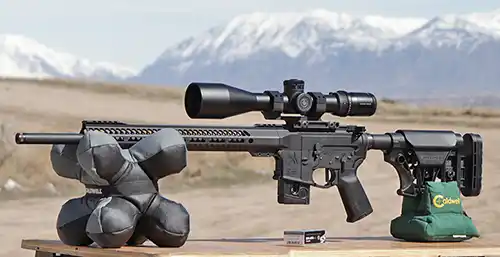
So, the 1:12 twist rate? This was specifically chosen to stabilize those zippy little 30-grain rounds, all the way up to chonky Aguila 60 grain Sniper Subsonic ammo. Although the latter may as well be made from unicorn tears, as I haven’t seen any since pre-COVID. But this twist rate handles that range of bullet weights without the worry of expensive baffle strikes.
Bore Buddy’s testing confirmed that even 40 gr subsonic rounds can benefit from a twist rate faster than 1:16 in cold weather. This is great news for me, since I shot only 40 grain rounds, and the temps were mostly in the 30s for my testing. And my results confirm that they got it right with this barrel.
Options and Accessories
BoreBuddy offers dozens of accessories, so whether you go with a complete upper, or are building your own from scratch, they have you covered. Since I planned to suppress my rifle, I opted for their Gen 4 22 LR Adjustable Bolt Weight kit ($97.85), and their AR22 Recoil Spring kit ($20.85). The weight kit includes a bolt buffer and different weights for the bolt. Between that and their AR22 Recoil Spring kit, it’s possible to fine-tune the action. And by that, I mean that mine runs as smoothly and reliably as any other precision semi-auto rimfire, but it’s also quiet. Much quieter than I expected when suppressed.
Learn from my Mistakes
Initially, I was going to use a folding stock adapter, since the AR22 doesn’t require a buffer. Well, that may have caused issues with the bolt not having enough pressure on it. Stubbornly, I tried two different adapters, which cost me wasted time at the range. So I switched to a standard AR lower. Next, I thought I could use my really light match trigger. But I kept getting light strikes, and then the trigger manufacturer confirmed that their cassette-style trigger was not compatible with the AR22. Yet another cassette-style trigger worked just fine. Meanwhile, it looks like the LaRue MBT-2S is in my future.
In an effort to move forward with the tuning, I grabbed a different AR lower and headed out for another range trip. Turns out that I left my magwell adapter on the other lower. And the S&W M&P 15-22 magazines don’t work so great without that adapter. At this point, I got my rifle to cycle, but had some feeding issues, which was no surprise. Again, these are all user errors. BoreBuddy has options for replacing the buffer, as well as adding a rear Picatinny rail or even a Law folder. If anything, the takeaway here is to check with them before you order, if you plan to use anything other than a standard lower.
My Setup
Throughout my testing, I used three different lowers. All three had basic mil-Spec LPKs, with three different triggers. The light springs in the mil-spec trigger worked, but not reliably, which I attributed to the springs. My “Competition” trigger was more than likely hampered by geometry that’s great for centerfire, not so much for rimfire. And the one that worked best happened to be from my “long range” AR. Which I also borrowed my Vortex Venom 5-25×56 scope from, complete with the QR mount.
Tuning the BoreBuddy AR22 Apogee Match Upper for Reliability and Auppressor Use
Once I got it to go bang every time, I had to tinker with the bolt adjustable weight kit. These are pairs of short steel and aluminum rods in two diameters, to match the holes in the bolt weight. They must be installed two per hole, but can be mixed and matched between the steel and aluminum. The goal is to find the right amount of weight so that the rifle cycles properly, without the bolt slamming. Too much weight will cause it to become unreliable, while too little will result in unnecessary wear on the buffer, along with a little more noise.
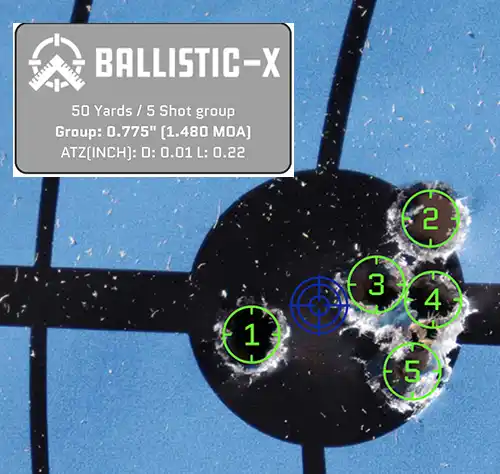
It’s a bit of trial and error, but generally only needs to be done once, unless you are changing up your ammo to something drastically different. I ended up with two steel weights, combined with the medium (yellow, 4 pound) spring from the AR22 Recoil Spring kit. This combination has been flawless with SK Semi-Auto Rifle ammo. Although BoreBuddy recommended CCI SV for a good balance of price to performance, I happened to have a fair amount of this SK on hand, so that’s what I tuned for. Given the results I’ve gotten so far, I may stick with it for a while too.
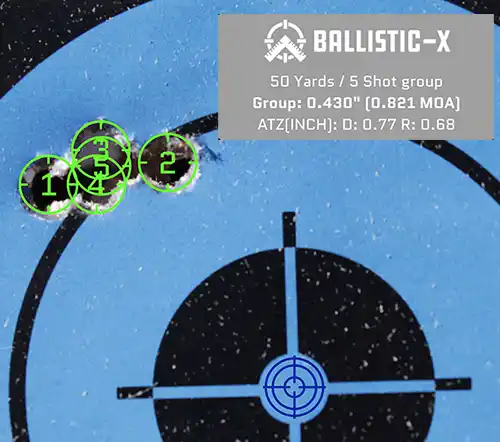
A Note About the Suppressor
In case anyone is wondering, I use a TacSol Axiom suppressor. All titanium and steel, six ounces, and virtually no first-round pop. It works well, although I have nothing to compare it to. Other suppressors may behave differently, but I have yet to see any shift in POI when switching from suppressed to unsuppressed. It’s been a solid performer, if a bit pricier than others.
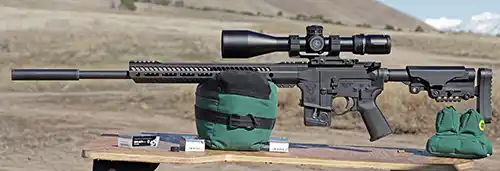
So does the BoreBuddy AR22 Apogee Match Upper live up to its name?
Rimfire being rimfire, I was expecting it to take a while for the barrel to “settle in” before I started seeing good groups. I’m more than halfway through my first brick of that SK, and at 50 yards, five-shot groups of 1 MOA or less are common. You can see from the photos that I’m shooting off a portable, folding shooting table.
When the ground isn’t muddy, I’ll throw my mat down and shoot prone. That almost always results in slightly tighter groups. But I’m already seeing results that I would be happy with off a heavy concrete bench. I’ve taken it out to 100-150 yards on some steel too, with consistent hits, but no groups at those distances. Either way, the BoreBuddy AR22 Apogee Match Upper has exceeded my expectations so far.

What’s Next for the BoreBuddy AR22 Apogee Match Upper?
As the weather warms up, I’ll get to shoot more. So I expect that once I pass the 1,000 round mark, an update will probably be in order. And I’ll have time to sort out triggers and stocks, especially when I start shooting prone more. Meanwhile, I’m pretty excited to shoot this quiet and accurate AR-22.
And as always, I’d like to thank the folks at BoreBuddy for providing their AR22 Apogee Match Upper for some testing and evaluation. While not the first (or even 3rd) AR22 I’ve shot, it is far and away the most accurate. The fact that they have sorted out the bolt noise and offer a quiet option is just icing on the cake. If you’re interested, head over to the BoreBuddy website.
Okay, readers, do you have questions about the BoreBuddy Apogee Match Upper? Did I forget anything? Has anyone else used BoreBuddy products?
